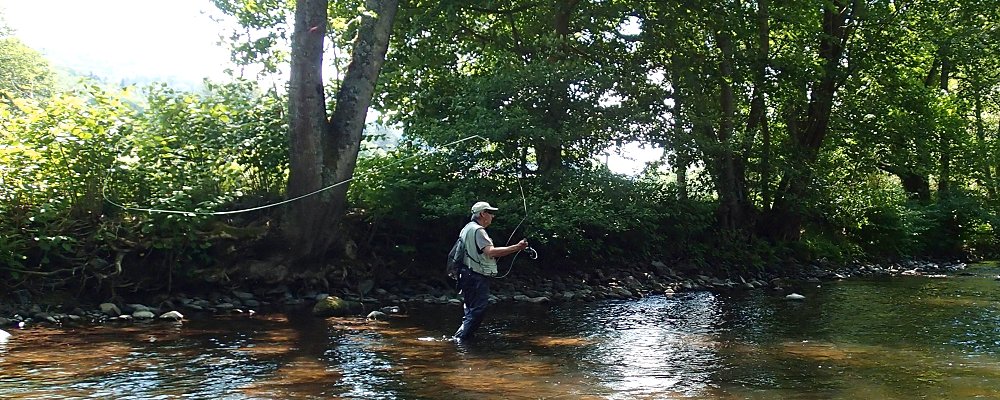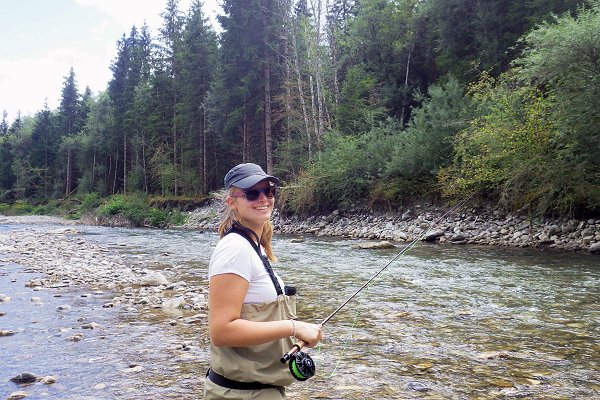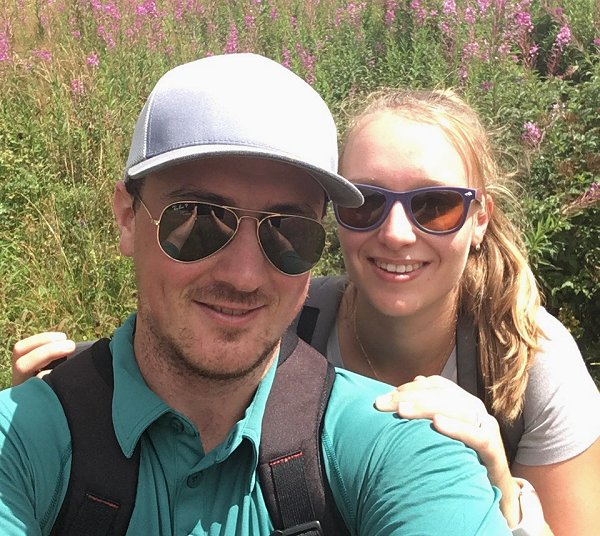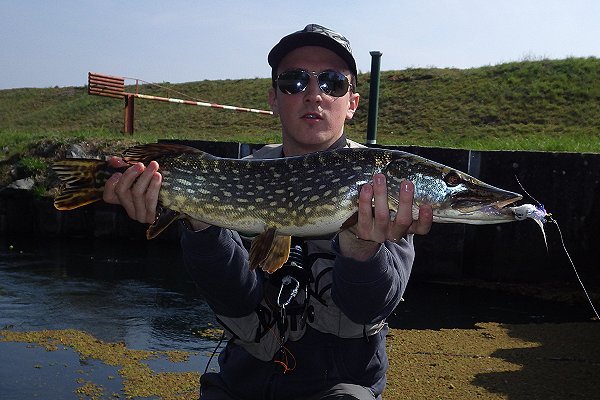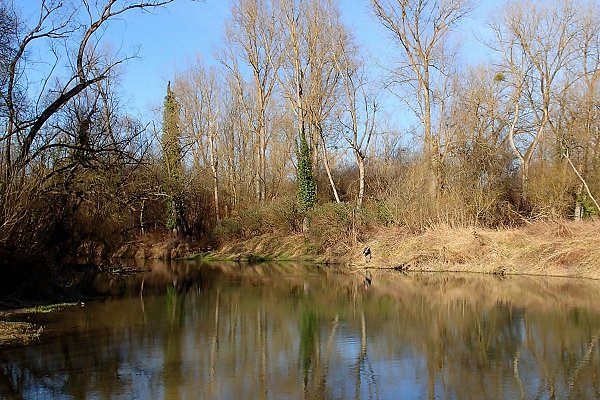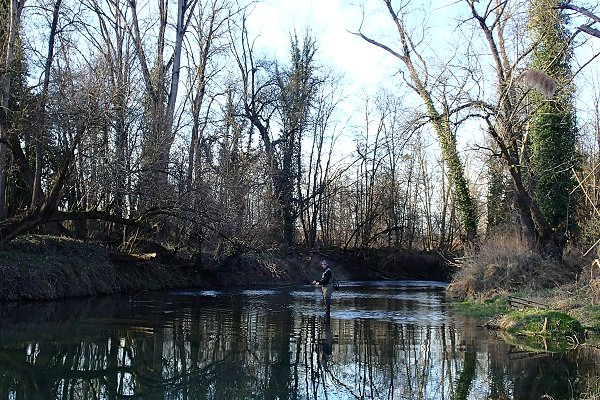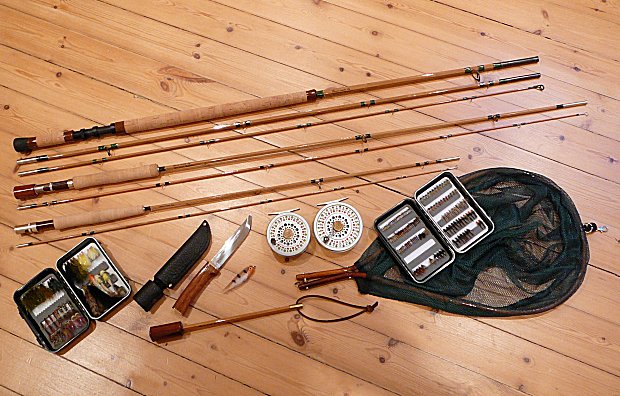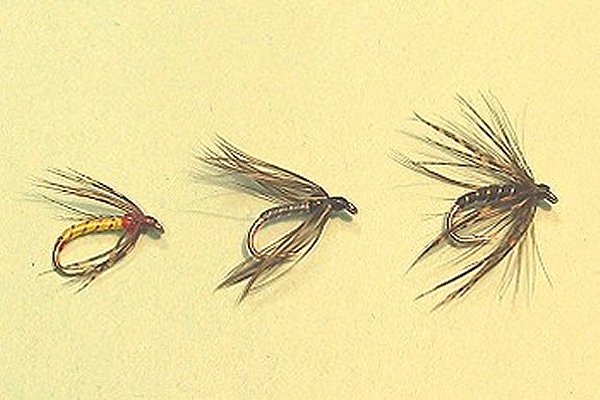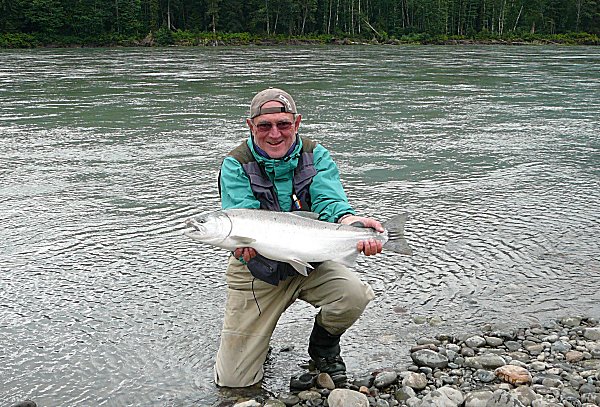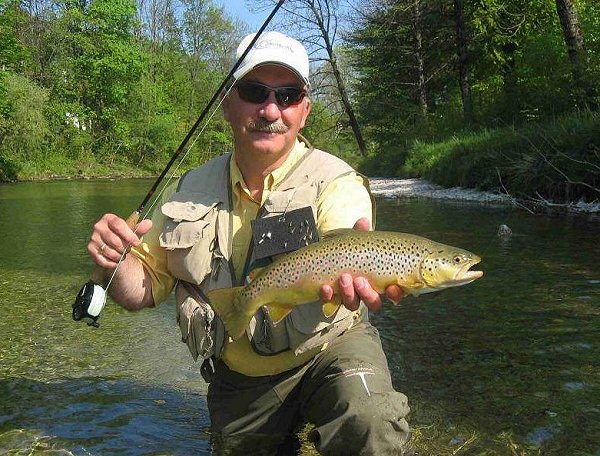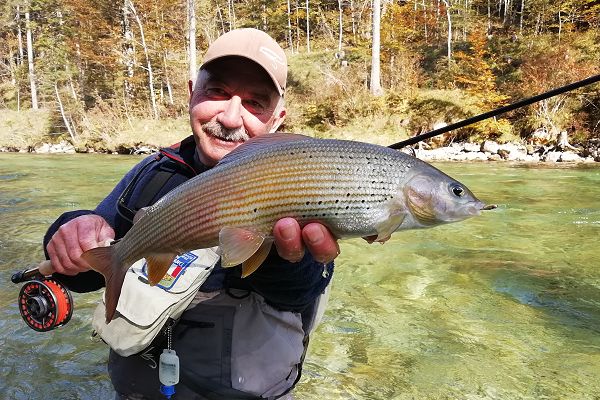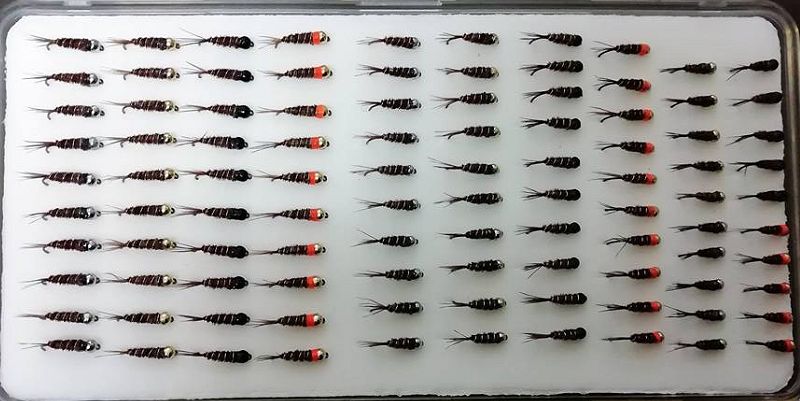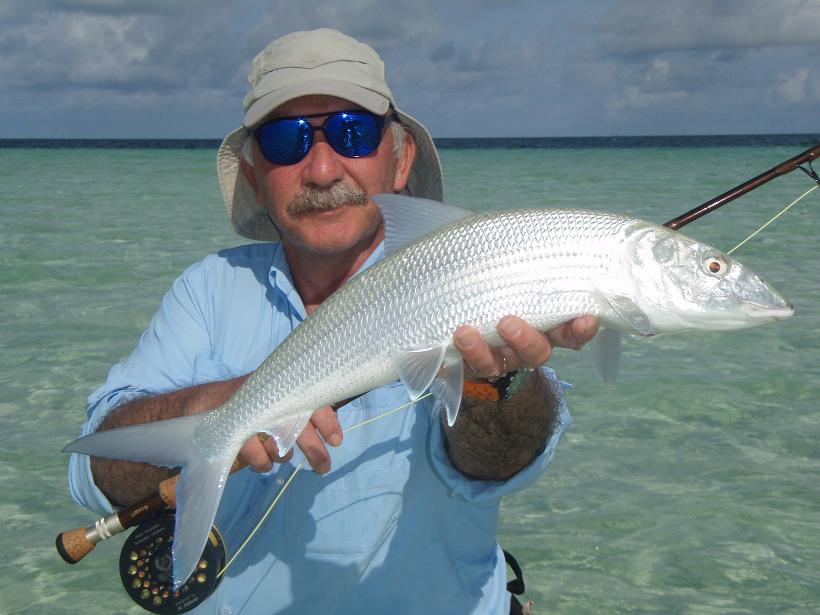
Among the fish that we regularly catch with the fly in Alsace, whatever the technique, the chub is one of my favorites. If it is less “noble” than a trout, it is largely as suspicious and difficult to catch with regard to large specimens. When I started, at the age of 6, to fish by surprise in the stream of my childhood, my first big feelings as a fisherman I owe them to the chub, the biggest of which had “snubbed” my grasshopper left me dreaming for several nights.
Here you will find some answers to questions you might ask yourself about his manners, his fishing and the good flies you need to deceive his legendary distrust.
The chub (leuciscus cephalus) like the dace, belongs to the genus Leuciscus which includes about twenty species and subspecies in Europe. With its fusiform and cylindrical body covered with large scales and its massive head, the chub is a “beefy” fish. Its back is blue-green to gray-brown with greenish reflections. Silvery in young fish, its flanks become nicely golden as soon as they exceed 30 cm. Its ventral and anal fins are orange and its tail is the color of the Vosges crest line, it means gray-blue.
It is a very common species throughout Europe. In Alsace, it is found in the Rhine, the canals, the Plobsheim lake, numerous gravel pits and all second category rivers as well as the lower areas of first category rivers. With global warming, we meet it more and more regularly upstream of rivers, even in 1st category areas where barely 10 years ago there were only trout. This is how I caught a chub in 2019 on the no-kill course in Schirmeck .
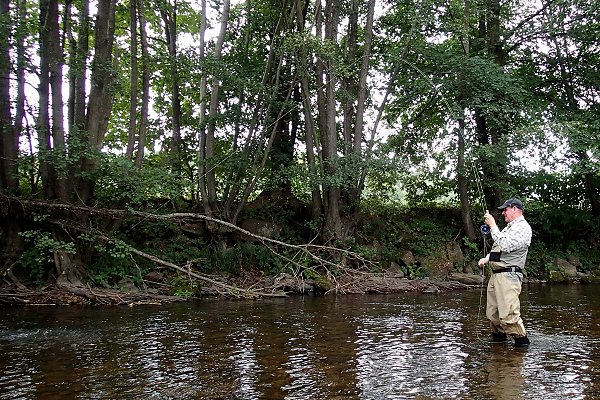
Chevesne or chevaine in french, it has many diminutives or nicknames, like cabot (big head). In Germany he is known as Döbel and in Alsace as Fourne. And in the area of the river Sarre as Milp. In some fish bases, you may find it also sometimes until Squalius cephalus .
The chub lives mainly in fairly slow running waters, but I regularly catch them in clearly stronger currents. In summer it is often closer to the surface and under the branches overhanging the banks in search of insects, while in winter it descends to the bottom. But the slightest warming is enough to bring it out of its winter torpor.

Generally living in schools of 5 to 30 individuals when they are small, the largest chub are more solitary, even if an area which is very favorable to them can see several large fish dawdling together. It is generally considered that it can reach 70 cm and 5 kilos, My personal record is a 68 cm chub, caught in the Bruche in Molsheim, on sight, with an imitation of a freshwater scud.
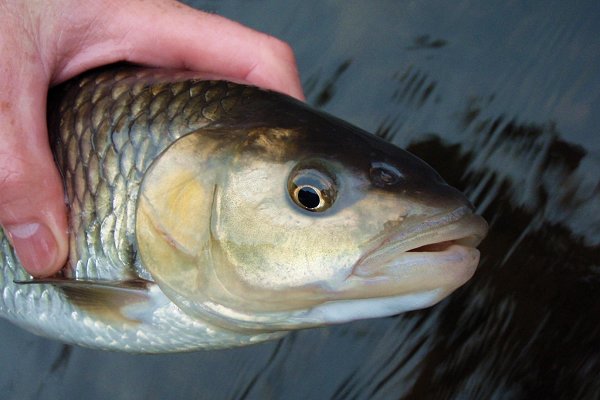
This fish is omnivorous. It is known to eat almost everything: worms, larvae, crustaceans, molluscs, insects, river mosses, fruits, bread and small fish.
Its appetite makes us happy as a fly fisherman, because it is possible to fish it all year round. I personally like to try a big chub on sight in summer under the foliage, in the cool. In this case my favorite flies are TOT, KMM-2, CBF and sometimes CSC-2.. But I also like to deceive my first chubs of the year from January or February, in the 2nd category, as long as the water is clear and a little ray of sunshine causes the hatch of a few midges, which will not fail to interest the schools of small chub. In this case it will be on a TOT, a CTC-1 or a PTC-3. And it is not uncommon for a larger specimen to point its large lips towards the surface on this occasion. As nymph, my preference for fishing big chub on sight, or with indicator, goes to the NFL-2, TVC-1, GMS-1, GCS and the series of micro-headset-silver, particularly the MCA-4.
Its reputation as a very mistrustful fish is legendary and I can confirm that it is not usurped. How many times have I seen a big chub inspecting my dry fly on the surface for a long time, before leaving again disdainfully, seeming to mock the humble fisherman whose heart was racing at the sight of the imminent swallowing. And, whatever the technique, once a big chub has spotted you, it becomes almost impossible to make it bite. The slowest gestures are necessary to approach it.

The chub is not known for its strong defense and it is true that it generally surrenders fairly quickly. But more than one big chub made me see all the colors at the end of a leader before coming. It happened to me several times before I identified the fish, to believe for more than a minute that I had a big trout at the end of my line. This is the kind of emotion that I wish you!
